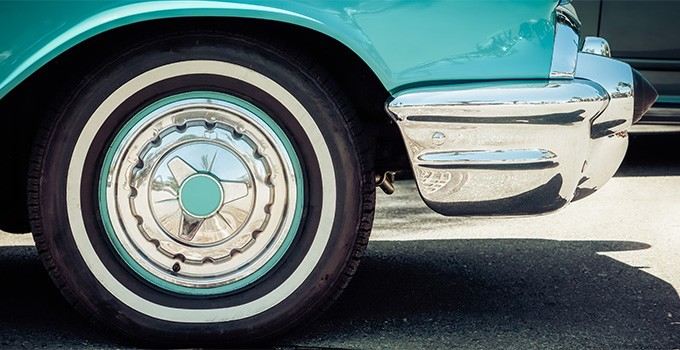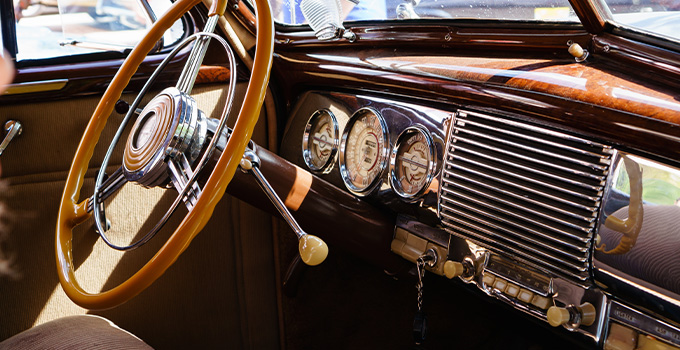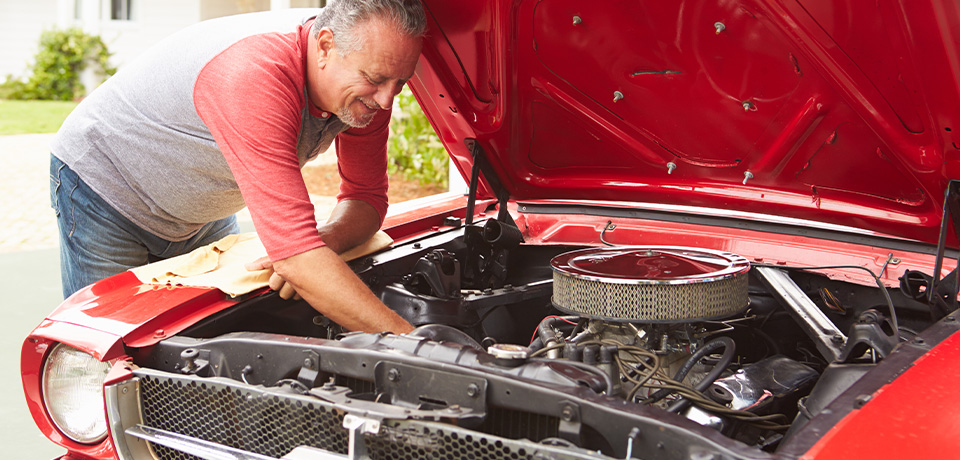Taking care of your classic car is part of the fun. It requires more attention and know-how than maintenance for a modern car, but it’s worth it when you’re able to cruise down the street in your vintage vehicle.
We’ve compiled a list of essential maintenance tips for those with collector cars.
Washing and waxing
Washing and waxing your collector car does more than restore that new car shine. Cleaning your car rids the surface of salt, dirt and other grime that could cause damage to your exterior, and applying a wax will provide protection and shine to your vehicle’s body and paint. Hand-washing your vehicle, where possible with Turtle Wax® Pro products, will leave your vehicle sparkling clean with lasting protection.
Tip: Some municipalities restrict hand-washing vehicles at residential locations. Check your local bylaws prior to hand-washing your car in your driveway.
After your hand wash, keep it clean at Co-op’s convenient automatic car washes to maintain your protection and shine. Co-op’s Premium Wash package includes features to clean and protect your car including undercarriage rinse, rust inhibitor, and tire and wheel cleaner. Our Extreme Wash features the same options as Premium, plus Turtle Wax® Pro Ice® Instant Shine — a wax specially designed for and exclusive to Co-op. This product bonds with your vehicle’s paint for a dryer, shinier finish that will protect against road film.
For those who prefer hand washing their classic cars, we recommend using Turtle Wax® Pro Ice® Wash and Wax for a deep clean and lasting protection.

Tires
First-time collector car owners might think the secret to keeping a classic car in top condition is to keep it under wraps indoors. While this practice will save collector cars from hazards like weather, it can also cause warping or flat-spots on tires. If you’re storing your car long-term, raise it up on jacks and blocks so the weight of the car isn’t resting on the tires. If that’s not possible, try to shift your car back and forwards a foot or two every few weeks.
The best thing to do, however, is to drive your car as much as possible while keeping an eye on your tire pressure.

Regular rides
Cars are built to move. Try to take your car out for a half-hour drive at least once a month — one of the biggest issues with classic automobiles is they’re not driven regularly. When they sit, batteries corrode, mice make homes out of the upholstery, rubber seals dry out and gas turns to varnish. Getting the temperature of your car up will also help to remove any dampness and condensation.
Besides, what’s the point of having a vintage car if you aren’t going to drive it?
Insider Tip: Always make sure your car is warmed up before you hit highway speeds. The slow warm-up will help the engine to operate at an optimal level; accelerating a cold car can have lasting damage. Often, you can tell that your engine is ready to go when your vents can blow warm air.
Fluids
We can’t stress this enough — keep your classic car happy by maintaining the fluid levels. Your oil, coolant and brake fluid are all integral to keeping your car running smoothly. Keep a close eye on your gauges as classic cars may surprise you with sudden leaks.
Fuel
Classic cars will almost always need high-quality, premium fuel — engines were simply built differently back in the day. Co-op Gasoline is good for both modern and legacy vehicles.

